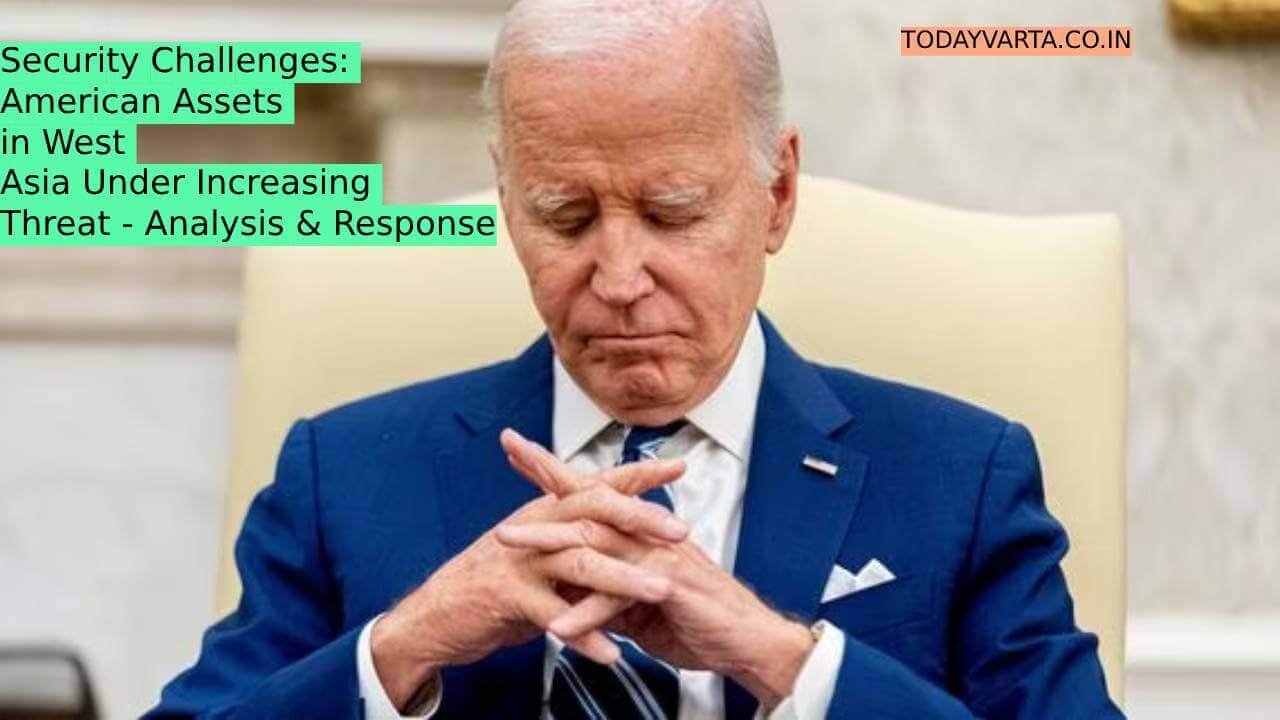Ongoing Security Challenges Faced by American Assets in West Asia
Proliferation of Attacks
American military installations and personnel in West Asia have experienced a surge in attacks. Over a span of fewer than two months, nearly 80 instances of militant assaults utilizing missiles and drones have targeted various US bases, including the US Embassy.
Regional Impact Post Israel-Hamas Conflict
Notably, these attacks have transpired across multiple theaters, encompassing maritime, Syrian, and Iraqi territories. This trend emerged following the commencement of the Israel-Hamas conflict, raising concerns about the frequency and intensity of assaults on US assets in the region.
Strategic Deployment Overview
The United States maintains a significant military presence in West Asia, with an approximate deployment of over 45,000 troops dispersed across key locations such as Kuwait, Qatar, Bahrain, Saudi Arabia, and the United Arab Emirates. Additionally, smaller contingents of approximately 2,500 troops in Iraq and nearly 900 in Eastern Syria have been specifically targeted by militia groups affiliated with Iran.
Response and Escalation Dynamics
In response to escalating threats, the US bolstered its military assets in West Asia following the Israel-Hamas conflict. This augmentation included the deployment of the USS Eisenhower aircraft carrier in the Red Sea, the presence of Ohio-class nuclear-powered submarines, and the positioning of the Ford carrier strike group in the Mediterranean Sea.
Nature and Magnitude of Attacks
Reports from the US military highlight a concerning trend, with 37 attacks recorded in Iraq and 41 in Syria in recent weeks. Notably, warnings from Iran-backed Houthi rebels, explicitly targeting all Red Sea-bound vessels regardless of nationality, further exacerbate the security landscape in the region.
Balancing Act and Strategic Concerns
The strategic advantage of having a significant troop presence in West Asia has now evolved into a security liability. The susceptibility of these bases to hostile forces poses a delicate challenge for the United States, compelling a cautious approach to avoid regional destabilization.
Considerations and International Perceptions
The nuanced response by the US to attacks on its personnel in comparison to its swift aid provision in other conflict zones has garnered criticism. However, the complexity of the regional dynamics and the potential ramifications of aggressive retaliation necessitate a calibrated approach to prevent further escalation.
Future Response and Diplomatic Repercussions
The pivotal question remains: Can the US respond assertively without catalyzing broader conflict? The apprehension of exacerbating tensions and losing favor in the region, especially amidst rekindled ties between Russian President Vladimir Putin and Arab leaders, underscores the intricate balance the US must maintain in formulating its response strategy.
This professional approach categorizes the evolving security situation in West Asia concerning American assets, delineating key facets of the current scenario and strategic implications for the United States.
I am Atul Sharma, As a full-time blogger, my focus is on delivering news articles on this platform. Your visit to my blog is highly appreciated. Thank you!

